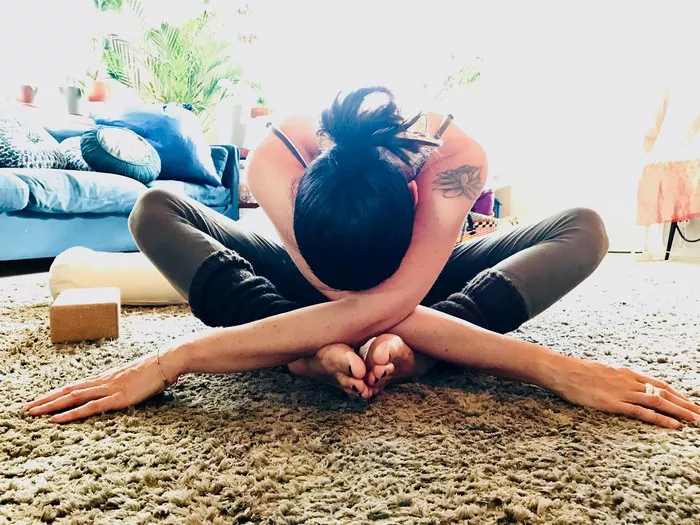Kriya Yoga is an ancient spiritual practice that has been shrouded in mystery and revered for its powerful transformative effects on the body, mind, and soul. Rooted in the rich traditions of Hinduism, Kriya Yoga combines meditation, breath control, and physical postures to achieve a state of deep spiritual awareness and inner peace. This comprehensive guide aims to demystify Kriya Yoga, exploring its history, techniques, benefits, and how it can be incorporated into modern life.
Origins and History of Kriya Yoga
Ancient Beginnings
Kriya Yoga’s origins are deeply embedded in the spiritual heritage of India. The term “Kriya” itself is derived from the Sanskrit word “kri,” which means “to do” or “to act with intent.” In the context of yoga, Kriya refers to a set of actions or techniques aimed at achieving spiritual growth. The practice is mentioned in several ancient Indian texts, including the Bhagavad Gita and the Yoga Sutras of Patanjali, where it is portrayed as a supreme path to enlightenment.
Revitalization by Modern Masters
Although Kriya Yoga has ancient roots, its modern revival is credited to the great yogi Lahiri Mahasaya in the 19th century. Lahiri Mahasaya received initiation into Kriya Yoga from Mahavatar Babaji, a mythical and immortal yogi believed to reside in the Himalayas. Lahiri Mahasaya’s teachings emphasized the accessibility of Kriya Yoga to all individuals, regardless of their background or social standing.
Subsequently, the practice was further popularized by his disciples, notably Swami Sri Yukteswar and his illustrious disciple, Paramahansa Yogananda. Yogananda’s seminal work, “Autobiography of a Yogi,” introduced Kriya Yoga to a global audience, highlighting its profound benefits and spiritual significance.
Principles and Philosophy of Kriya Yoga
The Science of Breath and Prana
At its core, Kriya Yoga is a science of breath and prana (life force). The practice involves specific techniques that harness the power of breath to control and direct the flow of prana within the body. This control over prana is believed to purify the mind and body, leading to heightened states of awareness and spiritual enlightenment.
The Role of Chakras
Central to Kriya Yoga is the concept of chakras, the seven energy centers located along the spine. Each chakra corresponds to different physical, emotional, and spiritual aspects of our being. Kriya Yoga techniques aim to awaken and balance these chakras, facilitating the flow of prana and promoting overall well-being.
The Path to Self-Realization
Kriya Yoga is fundamentally a path to self-realization. It seeks to transcend the limitations of the physical body and ego, allowing practitioners to experience their true divine nature. Through disciplined practice, individuals can achieve a state of union with the Divine, known as Samadhi, where the individual self merges with the universal consciousness.
See Also: The 5 Major Types of Yoga
Techniques of Kriya Yoga
Pranayama (Breath Control)
Pranayama is a cornerstone of Kriya Yoga practice. It involves various breathing techniques designed to regulate the flow of prana in the body. The most well-known pranayama in Kriya Yoga is the Kriya Pranayama, which involves a specific pattern of inhalation, retention, and exhalation. This technique is believed to energize the brain, calm the nervous system, and facilitate deep meditation.
Kriya Kundalini Pranayama
Another advanced technique in Kriya Yoga is Kriya Kundalini Pranayama, which focuses on awakening the dormant energy at the base of the spine, known as Kundalini. By guiding this energy through the chakras, practitioners can achieve heightened states of awareness and spiritual awakening.
Meditation and Concentration
Meditation is integral to Kriya Yoga, serving as a means to quiet the mind and focus inward. Techniques such as Hong-Sau and Aum meditation help practitioners develop concentration and inner stillness. These meditative practices are designed to transcend ordinary consciousness and reach deeper states of spiritual insight.
Asanas (Physical Postures)
While Kriya Yoga is primarily a spiritual practice, it also incorporates physical postures or asanas. These postures prepare the body for meditation by promoting flexibility, strength, and relaxation. Regular practice of asanas helps maintain physical health, which is essential for sustaining long periods of meditation.
Mantra and Japa
Mantras are sacred sounds or phrases used in Kriya Yoga to focus the mind and invoke spiritual energies. Japa, the repetition of mantras, is a common practice that helps purify the mind and align the practitioner’s consciousness with higher states of awareness.
Benefits of Kriya Yoga
Physical Health
Kriya Yoga offers numerous physical benefits. The practice of asanas and pranayama enhances flexibility, strength, and vitality. It improves respiratory function, cardiovascular health, and boosts the immune system. Regular practice can also help alleviate stress-related ailments such as hypertension, anxiety, and chronic pain.
Mental Clarity and Emotional Stability
The meditative aspects of Kriya Yoga promote mental clarity and emotional stability. Practitioners often report increased concentration, improved memory, and a greater sense of inner peace. The practice helps to quiet the incessant chatter of the mind, reducing stress and fostering a calm, focused state of being.
Spiritual Growth
The ultimate benefit of Kriya Yoga is spiritual growth. The techniques of Kriya Yoga are designed to awaken the latent spiritual potential within each individual. Through disciplined practice, practitioners can achieve profound states of meditation, self-realization, and a deep sense of connection with the Divine.
Holistic Well-being
Kriya Yoga promotes holistic well-being by addressing the physical, mental, and spiritual dimensions of life. It fosters a balanced lifestyle, encouraging healthy habits, mindful living, and a compassionate outlook. The practice cultivates a harmonious integration of body, mind, and spirit, leading to a fulfilled and meaningful life.
Incorporating Kriya Yoga into Modern Life
Finding a Qualified Teacher
To effectively practice Kriya Yoga, it is essential to find a qualified teacher or guru. A knowledgeable teacher can provide personalized guidance, ensuring that the techniques are practiced correctly and safely. Many spiritual organizations and yoga centers offer Kriya Yoga classes and workshops led by experienced instructors.
Creating a Sacred Space
Creating a dedicated space for practice can enhance the Kriya Yoga experience. This space should be quiet, clean, and free from distractions. Incorporating elements such as candles, incense, and spiritual symbols can create an atmosphere conducive to meditation and inner reflection.
Establishing a Routine
Consistency is key to reaping the benefits of Kriya Yoga. Establishing a regular practice routine, ideally at the same time each day, helps build discipline and ensures steady progress. Even a short daily practice can yield significant results over time.
Integrating Kriya Yoga with Daily Life
Kriya Yoga is not just a practice confined to the mat; it is a way of life. Integrating the principles of Kriya Yoga into daily activities can enhance overall well-being. This includes mindful eating, conscious breathing, compassionate interactions, and maintaining a positive attitude.
Seeking Community Support
Joining a community of like-minded practitioners can provide support and inspiration. Participating in group meditations, workshops, and retreats can deepen one’s understanding and commitment to the practice. Sharing experiences and insights with others fosters a sense of connection and encourages mutual growth.
Conclusion
Kriya Yoga is a profound spiritual practice that offers a path to self-realization and inner peace. Its rich tradition, rooted in ancient wisdom, provides a comprehensive approach to physical health, mental clarity, and spiritual awakening. By incorporating the techniques and principles of Kriya Yoga into modern life, individuals can experience profound transformations, leading to a more balanced, harmonious, and fulfilling existence.
As with any spiritual practice, the journey of Kriya Yoga requires dedication, patience, and an open heart. Whether one is seeking physical well-being, mental clarity, or spiritual enlightenment, Kriya Yoga offers timeless tools to navigate the complexities of life and discover the true essence of the self. Through the disciplined practice of Kriya Yoga, we can embark on a sacred journey towards self-discovery, inner peace, and ultimate union with the Divine.
Related topics:



















